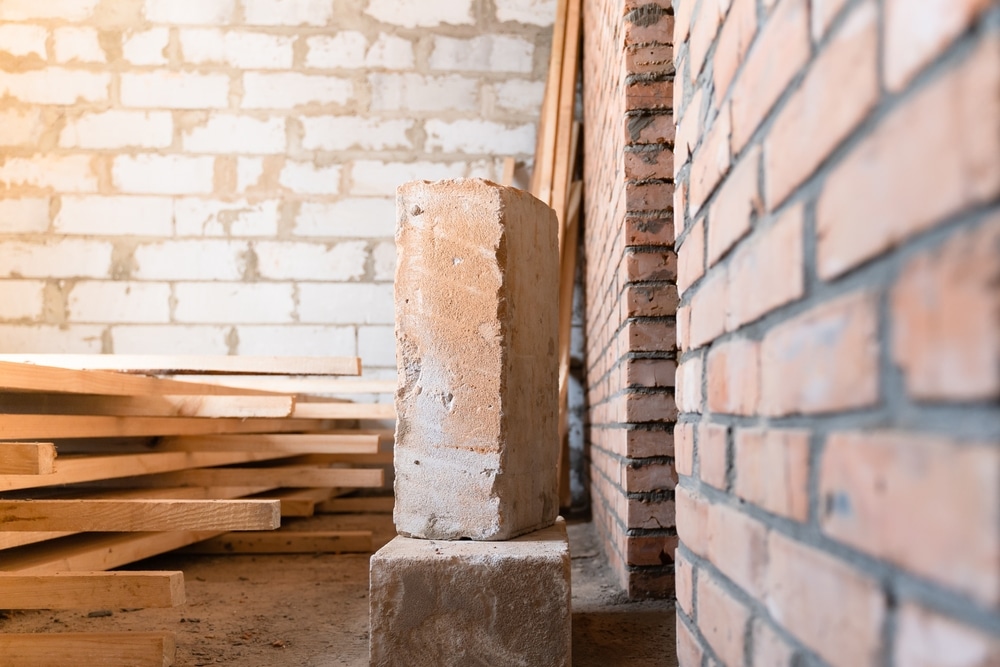The world’s first hydrogen fired brick – developed by Michelmersh – is now on display at the London Science Museum.
The London Science Museum is now the proud home of the world’s first hydrogen-powered brick; an innovative concept designed and developed by ‘Britain’s Brick Specialists’ Michelmersh and with expert insight from the Greater South East Net Zero Hub (GSENZH). Titled the ‘HyBrick’, the hydrogen brick produces 81 – 84% less carbon emissions in the manufacturing process.
The HyBrick marks an exciting step in our collective journey to net zero by 2050 – a journey that relies on innovation, creativity and cutting edge technology. Here we discuss how the HyBrick works and what it could mean for the construction industry as a whole.
What is the HyBrick?
Brickmaker Michelmersh – with specialist modifications and guidance from GSENZH – created the HyBrick using electrolytic hydrogen to fire the kiln. It also uses renewable energy to separate water into hydrogen and oxygen through electrolysis in order for the hydrogen to replace the natural gas typically used to power the kiln.
The project was made possible thanks to funding from the Department for Business, Energy and Industrial Strategy. Speaking of the process, John Taylor – Energy Projects Manager at GSENZH – said:
“Construction is an essential part of our livelihoods. Innovating and decarbonising the industry is vital in our journey to reach net zero. By swapping natural gas for hydrogen, we can significantly reduce the carbon emissions in the brick-making process.”
It’s the world’s first ever brick powered by hydrogen, and as such is currently being displayed at the London Science Museum as part of its Energy Revolution: The Adani Green Energy Gallery exhibition – a stark reminder of how significant this step is for the green agenda.
What could the HyBrick mean for the construction industry?
We know that the built environment is responsible for almost 40% of global energy-related carbon emissions and 50% of all extracted materials. Despite these staggering numbers, only a third of this is estimated to be recycled. In addition, the built environment is currently on track for less than half of their net zero goals.
There is no doubt that – without intervention – the numbers will get worse and worse as the global population (and, therefore, the need for more buildings) increases. If the built environment truly wants to lower both waste and emissions (while keeping up with ever rising needs), then it needs to accept the heavy role it plays in building a zero-emission, more resilient and sustainable environment for all – both now and far into the future.
However, this won’t happen overnight. And it won’t happen without total transformation. This is why hydrogen bricks could present an enormous opportunity to bring us closer to our climate change goals. The project by Michelmersh offers opportunities to majorly – if not entirely – decarbonise the production of clay bricks: this could lead to a complete overhaul of the brick manufacturing industry.
Sustainability in construction expert Andrew Sadler – Director at Buildpass – said:
“We really are incredibly excited about the HyBrick – it shows what is possible, and should set new ways of thinking, designing and producing in motion for the rest of the construction industry. We look forward to seeing what happens now that the HyBrick has been released, and whether it will become a viable addition to the makeup of building projects.”
The HyBrick has been on display at The London Science Museum since 26th March and is part of a free gallery showcasing the past, present and future of energy solutions.
If you would like to discuss your own approach to energy solutions, please get in touch with the Buildpass team. We’d love to connect and chat!




















